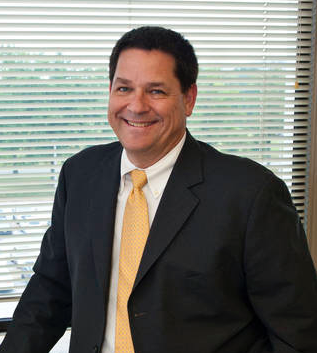
Roy Malone was recently named director of the Office of Center Operations at NASA's Marshall Space Flight Center in Huntsville, Alabama. Credits: NASA/MSFC
[SatNews] There, he managed a facility where the world's largest spacecraft welding tool was being used to begin building the massive core stage of NASA’s new rocket, the Space Launch System...
In 1994, when Roy Malone began working for NASA as a senior technical adviser in the Space Shuttle Program, he had already spent a decade as a Navy officer, serving at sea and in the Pentagon, seeing the world and even seeing war. He didn't expect a career could get more interesting.
But it did. For Malone, every year with NASA the work has grown more fascinating, he said, from his early days in the shuttle era to more recently when he served as director of NASA's Michoud Assembly Facility in New Orleans. There, he managed a facility where the world's largest spacecraft welding tool was being used to begin building the massive core stage of NASA’s new rocket, the Space Launch System. SLS will be the most powerful rocket ever built for deep space missions, including to an asteroid and ultimately to Mars.
In April, Malone was named director of the Office of Center Operations at NASA's Marshall Space Flight Center in Huntsville, Alabama. He is responsible for the management and operation of all Marshall facilities—its buildings, laboratories, rocket engine test stands—and for any new construction; for ensuring all employees are in safe and comfortable work environments, with clean air and water, power, protective services, and much more. And he does the same for facilities elsewhere that are managed by Marshall, such as Michoud.
"We touch absolutely everything that goes on in every Marshall program," Malone said. The work gives him a unique perspective on the enormity and breadth of Marshall's missions, which include round-the-clock management of science programs aboard the International Space Station and pioneering the use of advanced manufacturing techniques like 3-D printing, which are making SLS and the next generation of rocket engines and space vehicles more affordable and sustainable.
"The people in Center Operations are making sure these missions are successful. You can't have the Space Launch System without Center Operations," Malone said.
The ocean of space wasn't the ocean Malone charted course for as he was growing up in Virginia Beach, Virginia. "Since I can remember, I was going to be a Navy officer," he said. His father was a graduate of the Naval Academy in Annapolis, Maryland, and spent 30 years on active duty. Malone planned to either go to the academy or a university with a Navy ROTC program.
One of his high school teachers, impressed by Malone's advanced mathematics abilities, steered him toward the Georgia Institute of Technology. He researched and found what a great, and tough, engineering school it is, got his father's blessing and headed for Atlanta.
He was in ROTC at Georgia Tech and earned a scholarship his junior year, graduating in 1980 with a degree in electrical engineering and a full commission as a Navy officer. During a tour of duty at the Pentagon he met June Spenner, who was then an Air Force public affairs officer. They stayed in touch after he shipped back out to sea, and were married a couple of years later. As they were starting their family, June Malone resigned her commission and accepted a position at Marshall, where she is now supervisor of the Public & Employee Communications Office, responsible for a range of public affairs activities, media relations, social media programs and employee communications.
Malone left active duty for the Naval Reserves and joined his family in Huntsville, where in 1991 he became a senior quality engineer with PRC Inc. before joining NASA. He retired from the Naval Reserve as a commander in 2000.
Malone's 21 years of NASA experience will be invaluable as he directs the broad scope of Center Operations. He was deputy director of the Marshall Safety and Mission Assurance Directorate from 2002-06, and director from 2006-11 during which time he was selected to the Federal Government Senior Executive Service. The directorate works with other Marshall organizations and NASA centers to ensure that people, processes, facilities and hardware are safe, and that everything has been done to assure mission success.
In 2004, on a special assignment at NASA's Langley Resarch Center in Hampton, Virginia, Malone helped create the NASA Engineering and Safety Center, an important independent technical resource for the agency. He was manager of the Shuttle-Ares Transition Office at Marshall from 2011-12, as the Space Shuttle Program was coming to an end and the Constellation Program was replaced by the SLS Program. Constellation included the Ares I launch vehicle and Ares V cargo launch vehicle, which were being designed and developed by engineers at Marshall.
Malone was director of Michoud, which is managed for NASA by Marshall, from 2012 until being named to his current position.
"It's just unbelievable how fortunate I've been, what great opportunities I've had," he said. "I'm very thankful that both in the Navy and NASA, I've been able to work to make a difference."
For more information about NASA's Marshall Space Flight Center, visit.

